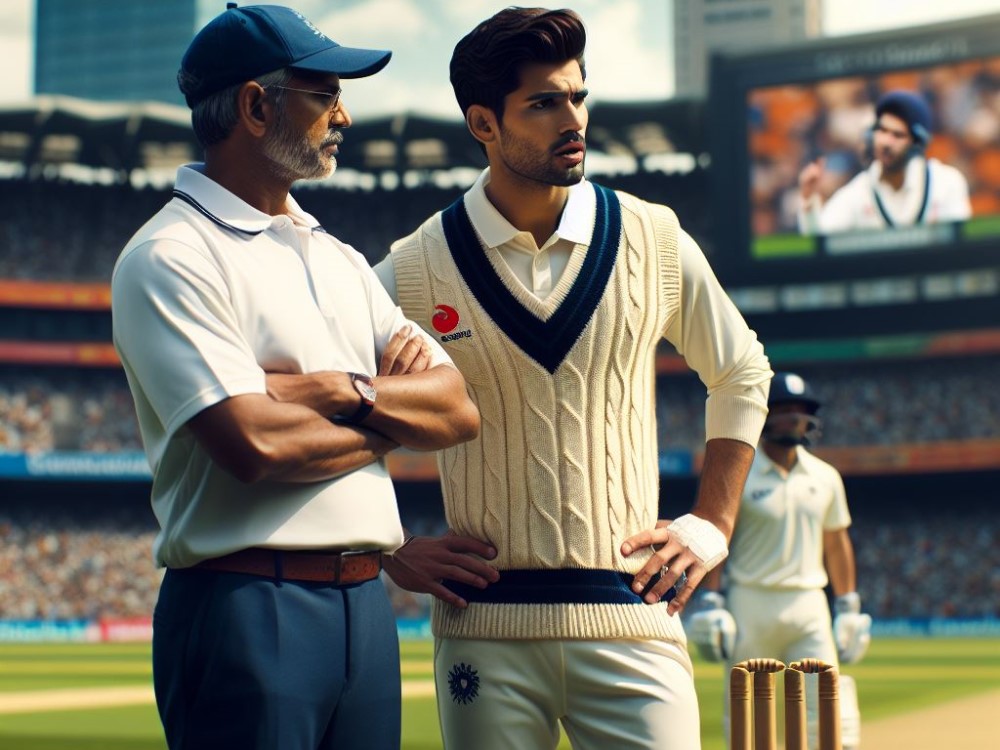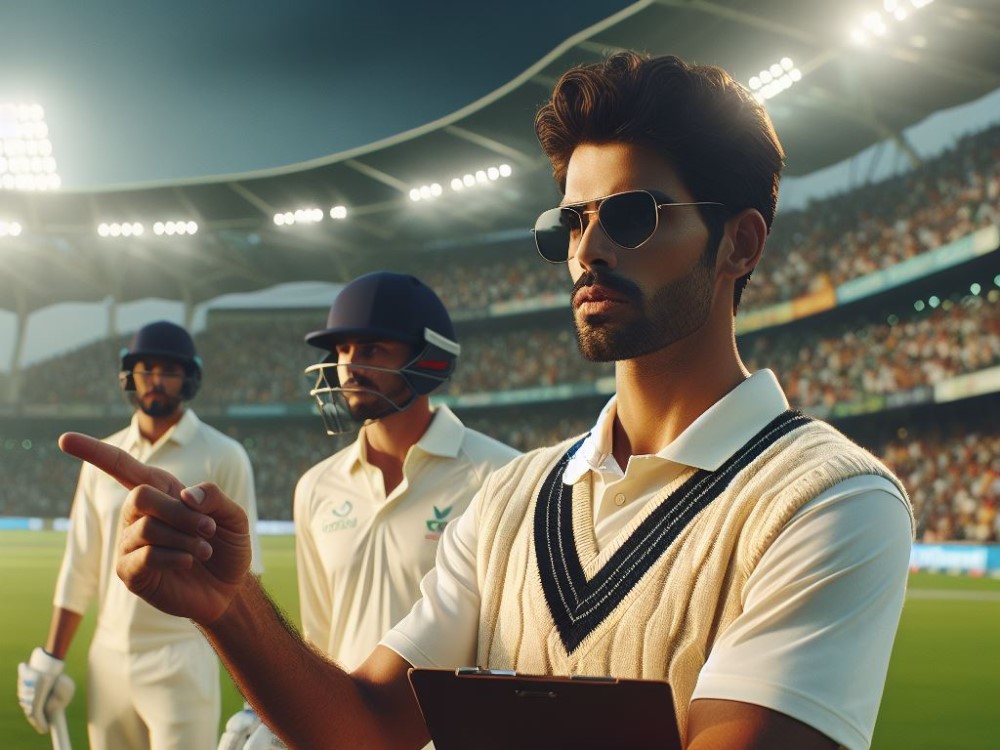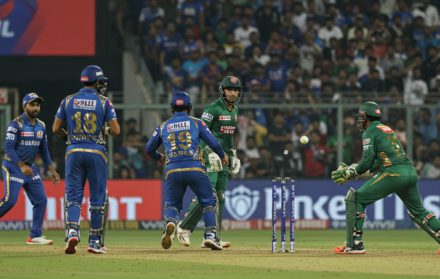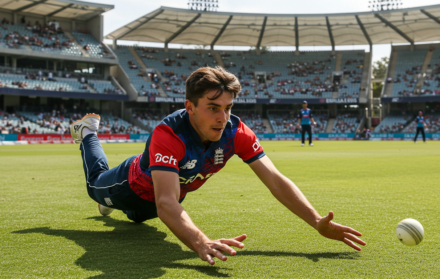
How a Captain is Chosen For A Cricket Team
Cricket captains play a crucial role in leading their teams, making important decisions, and strategizing during matches. Understanding how a captain is chosen for a cricket team involves a combination of selection by the cricket board, appointment by the team management, or even election by the team members themselves.
The captain’s responsibilities go beyond just leading the team on the field. They are responsible for team strategy, decision-making, game tactics, and field placement. They play a vital role in motivating and inspiring their teammates, ensuring effective communication, and fostering a positive team environment.
To be a successful cricket captain, certain qualities and skills are required. These include strong cricketing abilities and skills, leadership qualities, effective communication, and interpersonal skills, as well as tactical and strategic thinking. A captain must possess the ability to lead by example, inspire their team, and make quick and decisive decisions in high-pressure situations.
The transition of captaincy from one player to another varies depending on the team and circumstances. It could be through a formal process of appointment or a more informal handover of responsibilities.
Looking at case studies of famous cricket captains such as Imran Khan of Pakistan, Mahendra Singh Dhoni of India, and Ricky Ponting of Australia can provide insights into their selection process and the qualities that made them successful leaders.
Role and Responsibilities of a Cricket Captain

Being a cricket captain is no ordinary task. In this section, we’ll uncover the crucial role and responsibilities that come with it. From strategic team planning and decision-making to demonstrating exceptional leadership abilities and fueling team motivation, we’ll explore what it takes to excel in the captain’s position.
We’ll dive into the intricacies of game tactics and the art of field placement, elevating the captain’s influence on the outcome of the match. Get ready to discover the secrets behind successful cricket captains!
Team Strategy and Decision Making
The team captain in cricket plays a crucial role in team strategy and decision making. They have the responsibility of making tactical decisions on the field, including setting the batting and bowling order, organizing field placements, and determining game tactics.
A number of effective leaders like Imran Khan, Mahendra Singh Dhoni, and Ricky Ponting have demonstrated their expertise in team strategy and decision making, leading their respective teams to significant victories. The captain’s ability to analyze the game situation, evaluate the opposition, and make prompt decisions can have a profound impact on the team’s performance on the field. It is through their strategic acumen and decision-making skills that captains devise a winning formula for their team.
Leadership and Motivation
- Leadership and motivation are crucial qualities for a cricket captain. Here are some ways in which these qualities are demonstrated:
- Leading by example: A captain sets the tone for the team by exhibiting dedication, discipline, and hard work.
- Motivating teammates: Captains inspire their teammates by providing encouragement, support, and positive reinforcement.
- Establishing team goals: A captain plays a vital role in setting team objectives and ensuring everyone is committed to achieving them.
- Effective communication: Captains must effectively communicate strategies, plans, and tactics to team members.
- Building team cohesion: Good captains foster a sense of unity and camaraderie within the team, promoting a positive team environment.
By embodying these leadership and motivational qualities, captains can drive their teams towards success on and off the cricket field.
Game Tactics and Field Placement
When it comes to cricket, game tactics and field placement play a crucial role in a team’s performance. The captain is responsible for making strategic decisions, setting the fielding positions, and ensuring the right players are in the right place at the right time. A well-planned field placement can put pressure on the opposition and create opportunities for wickets.
Some key fielding tactics include having attacking fielders close to the batsman, employing defensive strategies to restrict scoring, and adjusting field positions based on the batsman’s style and strengths. Effective game tactics and field placement can greatly influence the outcome of a cricket match.
Pro-tip: Effective game tactics and field placement require careful analysis of the opposition’s strengths and weaknesses, as well as a deep understanding of the playing conditions. The captain should anticipate the batsman’s shots and adapt the field accordingly to maximize the team’s chances of success.
The Process of Choosing a Cricket Captain

When it comes to choosing a captain for a cricket team, the process can take different forms. From selection by the cricket board to appointment by the team management or even election by the team members, each sub-section brings its unique dynamics and considerations.
Let’s dive into this intriguing world where leadership and cricket intersect, exploring how captains are chosen at different levels – from national teams to local clubs – and what factors come into play.
Selection by the Cricket Board
When it comes to choosing a captain for a cricket team, one common method is selection by the Cricket Board. The Cricket Board, which governs the sport in a particular country, plays a crucial role in appointing the captain. They consider various factors such as the player’s performance, skills, experience, and leadership qualities.
The board typically evaluates the candidate’s ability to lead the team effectively, make strategic decisions, and handle the pressure of captaincy. The player’s conduct on and off the field is also taken into account. The selection process by the Cricket Board ensures that a deserving and capable individual is chosen to lead the team.
Fact: In international cricket, the Cricket Board generally has the final say on selecting the captain for the national team.
Appointment by the Team Management
When it comes to the appointment of a cricket captain, the team management plays a crucial role. The team management is responsible for appointing the captain based on various factors such as their experience, leadership skills, and understanding of the game. Here are some key points to consider regarding the appointment of a cricket captain by the team management:
- The team management assesses the players’ performance, skills, and overall capability to handle the responsibilities of a captain for the appointment.
- They consult with the coaching staff and senior players to gather insights on potential candidates for the captaincy role by the team management for the appointment.
- The decision is made based on a combination of on-field performance, tactical acumen, interpersonal skills, and their ability to handle pressure situations by the team management for the appointment.
- The team management looks for individuals who can effectively communicate and motivate the team, devise game strategies, and make crucial decisions during matches for the appointment.
- It is important for the captain to have a good relationship with the team management as they work together to establish a successful team dynamic in the appointment.
Election by the Team Members
Election by the team members is one way to choose a cricket captain. This process involves the players voting for their preferred candidate from within the team. Here are some key points about the election process:
- Equal participation: Every member of the team gets to vote, ensuring a fair and inclusive selection.
- Player preferences: The election allows players to voice their opinions and choose a captain they believe will lead the team effectively.
- Understanding team dynamics: The election process helps identify the player who has the trust and respect of their teammates.
- Leadership qualities: The elected captain should possess the necessary leadership skills, such as communication, decision-making, and team motivation.
- Ongoing evaluation: The team members can reassess the captain’s performance through regular feedback and discussions.
Ultimately, the election process by the team members involves the collective decision-making of the team members, ensuring that they have a say in selecting their leader.
Qualities and Skills Required to be a Cricket Captain

Being a cricket captain requires a unique set of qualities and skills that go beyond just technical cricketing abilities. In this section, we’ll explore the essential traits that make a successful cricket captain.
From exceptional leadership qualities to sharp tactical thinking, we’ll delve into the various aspects that contribute to a captain’s effectiveness. So, let’s dive in and discover what it takes to lead a cricket team to victory on and off the field.
Cricketing Abilities and Skills
Cricket captains require a combination of cricketing abilities and skills to effectively lead their team. Here are some key aspects to consider:
- Batting skills: A captain should have a strong batting technique and be capable of scoring runs consistently.
- Bowling skills: A captain should possess good bowling skills and the ability to take crucial wickets at crucial times.
- Fielding skills: A captain must be agile and have excellent fielding abilities to set an example for the team.
- Strategic thinking: A captain needs to assess match situations, plan game tactics, and make quick decisions on the field.
- Communication skills: Effective communication is necessary to convey game plans, motivate teammates, and maintain team cohesion.
Developing these Cricketing Abilities and Skills will contribute to a captain’s success in leading their team to victories.
Leadership Qualities
Leadership qualities are vital for a cricket captain to effectively lead their team on and off the field. Here are the key leadership qualities that contribute to a successful cricket captain:
- Strong Communication Skills: A captain must possess impressive communication abilities to effectively interact with their teammates, coaches, and officials.
- Decision-making Abilities: They must exhibit quick and strategic decision-making skills during a match, such as determining field placements and making bowling changes.
- Lead by Example: Captains must lead from the front by performing well themselves and inspiring their team to do the same.
- Motivational Skills: They should possess the capability to motivate and inspire their teammates to give their best effort.
- Ability to Remain Calm Under Pressure: Captains must remain composed and maintain their calm during intense situations in order to make rational decisions.
To excel as a cricket captain, it is crucial to continually develop and refine these leadership qualities through practice and experience.
Communication and Interpersonal Skills
Developing communication and interpersonal skills is crucial for a successful cricket captain. Effective communication enables the captain to convey strategies, motivate teammates, and coordinate game tactics. Interpersonal skills are essential for building strong relationships and fostering teamwork and unity within the squad.
- Clear Communication: A captain must clearly and concisely articulate their plans to ensure that every team member understands their role.
- Active Listening: By attentively listening to their teammates, the captain demonstrates respect and encourages open communication.
- Empathy: Understanding and empathizing with teammates’ concerns helps the captain create a supportive and cohesive team environment.
- Conflict Resolution: Strong interpersonal skills empower the captain to resolve conflicts and maintain team harmony, which is crucial for success both on and off the field.
Developing strong communication and interpersonal skills will greatly enhance a captain’s ability to lead, inspire, and bring out the best in their team.
Tactical and Strategic Thinking
Tactical and strategic thinking is of utmost importance for a cricket captain in order to effectively lead their team. When it comes to this aspect, there are some key factors to take into consideration:
- Comprehending the game: A captain must possess a profound understanding of the game, including its rules and various match situations.
- Analyzing the game: Captains should analyze the opposing teams, identifying both their strengths and weaknesses, and formulating strategies accordingly.
- Placements on the field: The strategic placement of fielders can apply pressure on batsmen and maximize the chances of taking wickets.
- Changes in bowling: Making strategic and well-timed changes in the bowling lineup can keep the opposition’s batsmen guessing and restrict their scoring opportunities.
- Order of batting: It is crucial to decide the batting order based on players’ strengths, the match situation, and the conditions of the pitch.
Ultimately, a captain’s tactical and strategic thinking can have a significant impact on the outcome of a cricket match. They must harness their cricketing knowledge along with effective decision-making and leadership skills in order to guide their team to victory.
How Is the Captaincy Transferred from One Player to Another?

The transfer of captaincy in cricket involves a specific process with several steps. Here is a list of those steps:
- Injury, retirement, or resignation of the current captain triggers the need for a new captain.
- The cricket board or team management selects a candidate based on their leadership skills, performance, and experience.
- The selected candidate is informed about their appointment and responsibilities as the new captain.
- If the current captain is still in the team, a formal meeting takes place where the new captain is introduced and the transfer is announced.
- The team members and coaching staff offer their support and cooperation to the new captain.
- The new captain begins to lead the team, making decisions on and off the field.
Case Studies: Famous Cricket Captains and their Selection
From Imran Khan’s charismatic leadership to Mahendra Singh Dhoni’s tactical brilliance and Ricky Ponting’s unwavering determination, this section takes a deep dive into the case studies of famous cricket captains and their selection.
Learn how these iconic figures shaped their respective teams and made history on the cricket field. Get ready to uncover the secrets behind their captaincy and explore the traits that set them apart in the realm of international cricket.
Imran Khan – Pakistan
Imran Khan, the former cricketer and current Prime Minister of Pakistan, is widely regarded as one of the most successful cricket captains in the history of Pakistan. Throughout his career, he displayed exceptional leadership, strategy, and cricketing skills.
- Leadership: Imran Khan’s strong leadership qualities inspired and motivated his team to perform at their best.
- Tactical and strategic thinking: Imran Khan’s ability to read the game and make quick decisions contributed to his team’s success.
- Communication and interpersonal skills: Imran Khan effectively communicated his plans and ideas to his team, fostering a sense of unity and collaboration.
- Cricketing abilities and skills: Imran Khan was not only a remarkable captain but also an outstanding all-rounder, contributing with both bat and ball.
Imran Khan’s exceptional qualities, skills, and leadership made him a legendary cricket captain for Pakistan.
Mahendra Singh Dhoni – India
Mahendra Singh Dhoni, also known as MSD, is a former Indian cricket captain who is renowned for his exceptional leadership skills and calm demeanor on the field. During his tenure as captain, Dhoni led the Indian cricket team to numerous victories, including the 2007 ICC World Twenty20, the 2010 and 2016 Asia Cups, and the 2011 ICC Cricket World Cup.
With his astute decision-making abilities and tactical acumen, Dhoni played a crucial role in shaping India’s success in international cricket. His remarkable batting skills and ability to finish matches under pressure made him one of the most revered and influential captains in Indian cricket history.
Ricky Ponting – Australia
Ricky Ponting, the successful cricket captain for Australia, led the team from 2002 to 2012. During his tenure, he achieved remarkable victories, winning multiple major tournaments. Notably, Ponting’s captaincy saw the Australian team clinch back-to-back World Cups in 2003 and 2007.
His aggressive and fearless style of play was evident both on the field and in his leadership. Under his guidance, Australia dominated international cricket, creating history with a record-breaking winning streak of 16 consecutive Test matches. Ponting’s exceptional batting skills, strategic thinking, and ability to motivate his team were instrumental in his success as captain.
Today, his contributions to Australian cricket are still revered and cherished.
Frequently Asked Questions on How a Captain Is Chosen for A Cricket Team
How is the captain chosen for a cricket team?
The process of selecting a captain for a cricket team involves various factors, including the player’s experience, leadership skills, and ability to make on-field decisions. The selection committee or the national board, along with input from the coach and captain, plays a crucial role in choosing the captain.
What are the practical steps involved in selecting a cricket team captain?
Selecting a cricket team captain requires a combination of art, science, logic, and hope. It involves considering factors such as the player’s batting record, relative strengths, leadership qualities, social binding, and clear thinking. The process also includes gathering input from the coaching and management staff, as well as observing the player’s performance and behavior on and off the field.
Who is involved in the team selection process for a cricket series?
The team selection process in cricket involves a selection committee appointed by the national board. The committee usually consists of former players or cricket administrators who travel to different venues during the domestic season to watch players. The committee takes into account various factors such as skill, consistency, team balance, and requirements. The national captain also plays a role in finalizing the team for the series, depending on the country’s specific selection process.
What are the responsibilities of a cricket team captain?
The captain of a cricket team has several responsibilities, including team selection, deciding the batting order, determining which players will bowl each over, and positioning fielders on the field. Additionally, the captain plays a crucial role in player direction, strategy development, relationship with the coach and management, player motivation, practice standards, social cohesion, and community recognition.
How does the captain make on-field decisions in cricket?
The captain is responsible for making on-field decisions in cricket, taking into account various factors such as weather conditions, pitch condition, opponent’s strength, and the scoring rate. The captain’s decision-making process includes assessing the situation, considering the strengths and weaknesses of the team and opposition, and determining the most effective strategies and tactics to employ during the match.
What qualities make an outstanding cricket team captain?
An outstanding cricket team captain possesses a range of qualities, including technical expertise, pleasure and interest in tactics, inventiveness, caution, and the ability to switch between attack and defense. In terms of man-management, a captain needs to have qualities like intuition, resourcefulness, sympathy, and clear thinking. Additionally, strong leadership skills, the ability to unite the team, and bring out the best in individuals are also essential for an outstanding captain.





